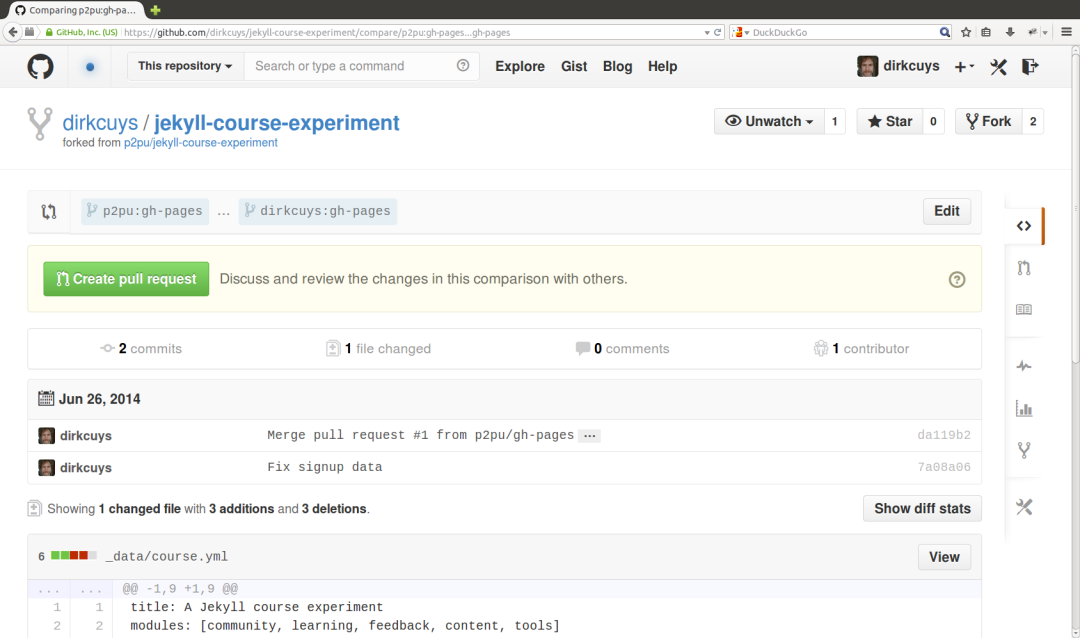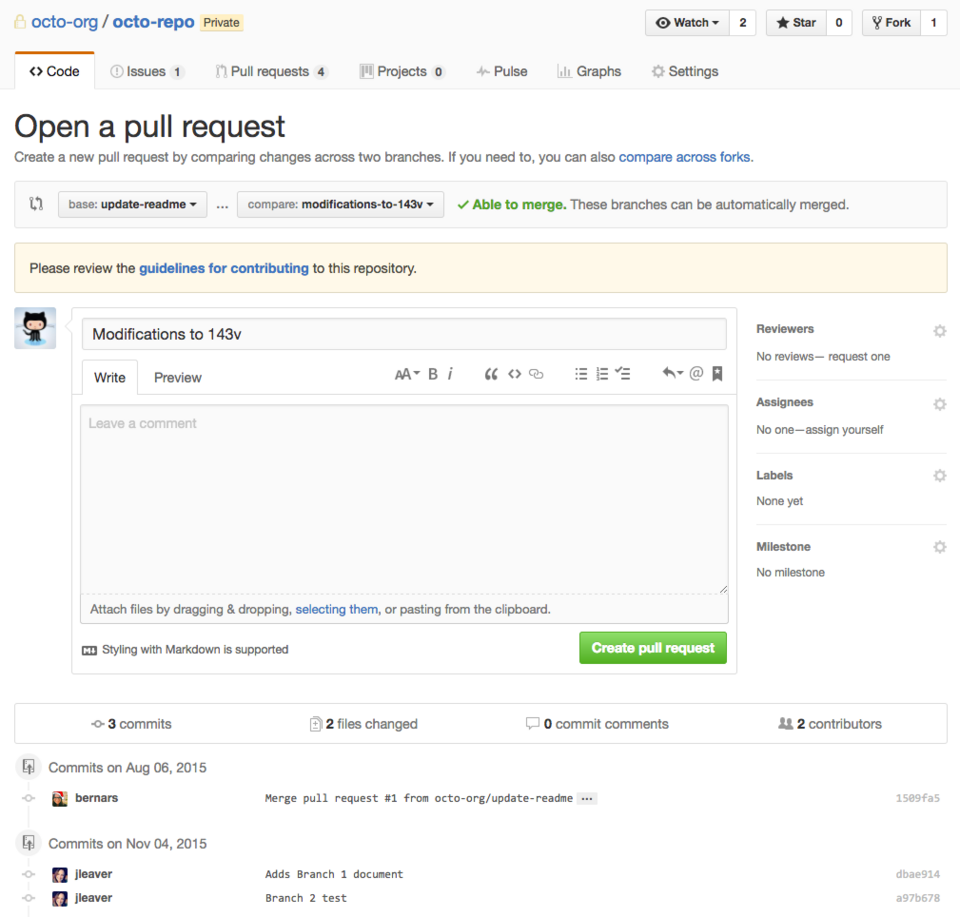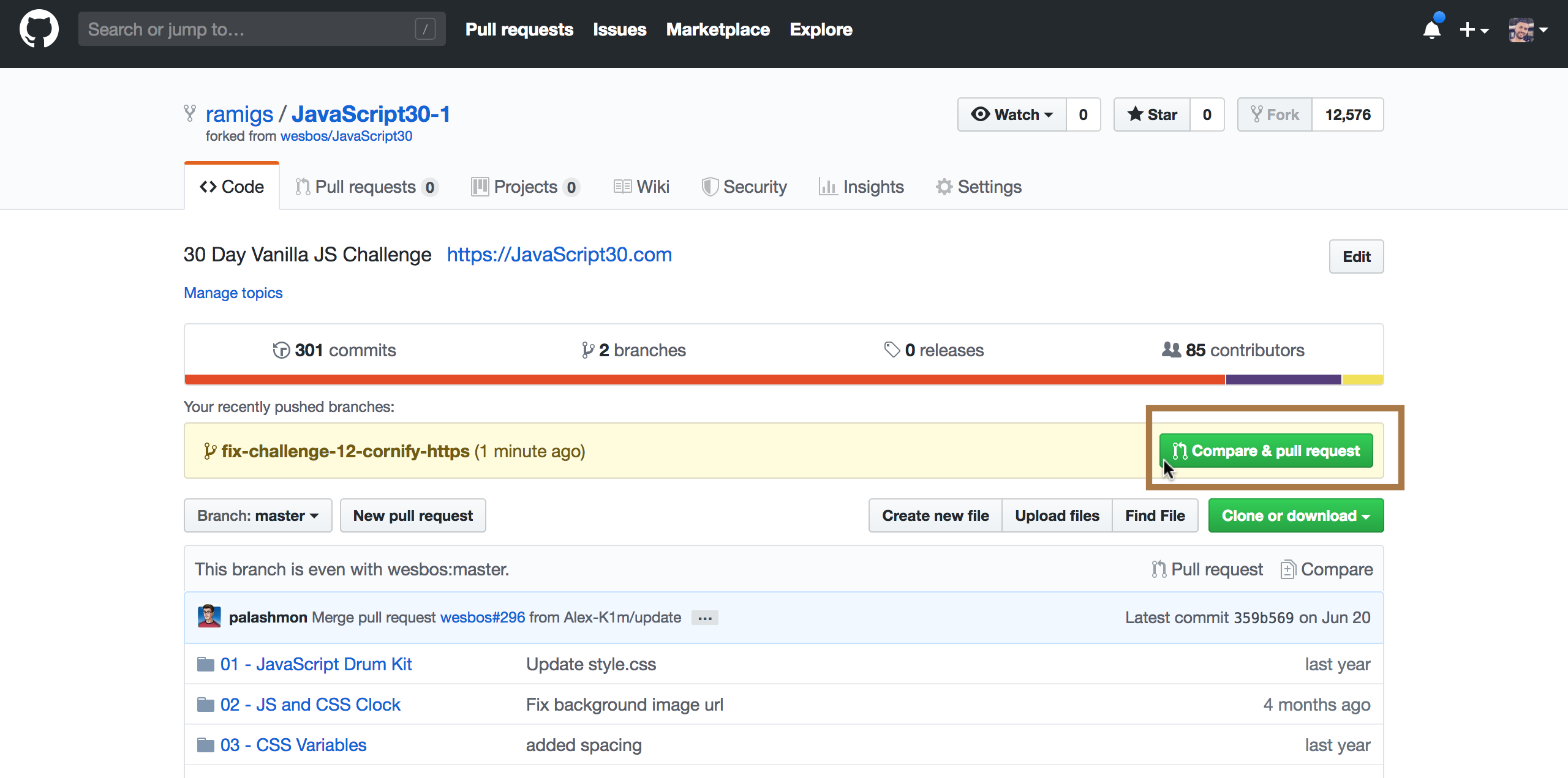
If all goes well, you just have to add a commit message and click on "Confirm Merge" to merge the changes. This is only available when github can detect that there will be no merge conflicts with the base branch. There are a few ways to do this.įirst, you can use github's "Merge pull request" button at the bottom of your pull request to merge your changes. Once you and your collaborators are happy with the changes, you start to merge the changes back to master.
GITHUB PULL REQUEST MEANING CODE
You can event leave a comment on particular lines in the code change simply by hovering to the left of a line and clicking on the blue note icon. Or see all the file changes from the pull request across all the commits under the "Files Changed" tab. View all the commits by all contained by a pull request under the commits tab, You can write comments related to a pull request, Remember you can use Github Flavored Markdown in the description and commentsįinally, click on the green "Send pull request" button to finish creating the pull request.

In that case, just make sure that the base repo and base branch are set correctly.Įnter a title and description for your pull request. You should leave the rest of the fields as is, unless you are working from a remote branch. Pick the branch you wish to have merged using the "Head branch" dropdown. And click on "Pull Request" button in the repo header. To create a pull request, you must have changes committed to the your new branch. Make sure your repository is up to date first using Creating a Topical Branchįirst, we will need to create a branch from the latest commit on master.

Pull Request Tutorial What is a Pull Request?

It is not related to Git hash IDs.ġThe idea here is that the value of a site like GitHub increases when more people use it: the Network Effect.Pull Request Tutorial A Visual Guide to Pull Requests Download. That's all the pull-request number is: a sequential number, the next number available at the time someone clicked on the "new issue" or "new pull request" or whatever button. In GitHub's case, these are all sequentially numbered.

1 As such, they let anyone-or almost anyone, depending on privacy settings, and note that some abilities require payment-access your repository and create "issues" and "pull requests" and other such things. GitHub's "thing" or "value-add" (or whatever term you want to use here to describe their raison d'être) is to allow social networking. The precise details vary from one provider to another, so to get a complete answer, you must specify a particular provider. Pull requests are not something in Git in the first place: they're an add-on.Įach hosting provider that uses Git-the Big Three today seem to be GitHub, Bitbucket, and GitLab-has their own method of providing something that is almost always called a pull request.


 0 kommentar(er)
0 kommentar(er)
